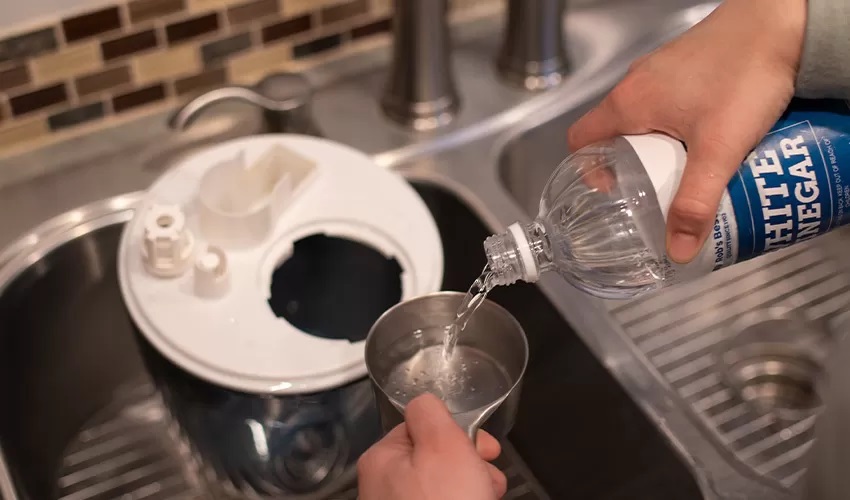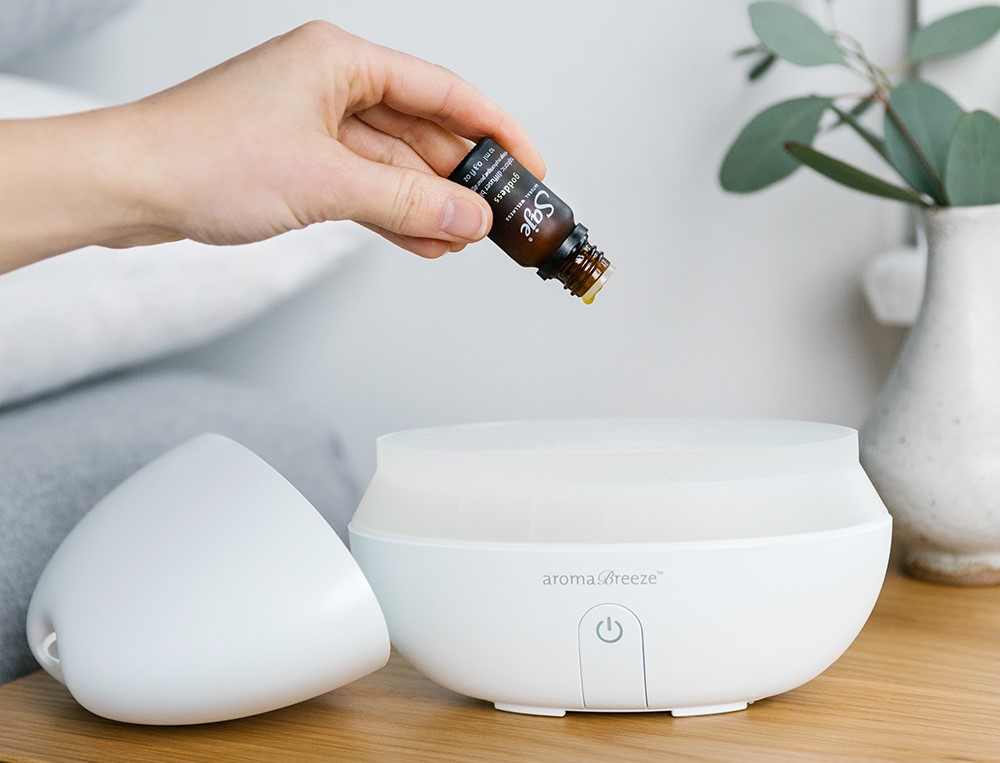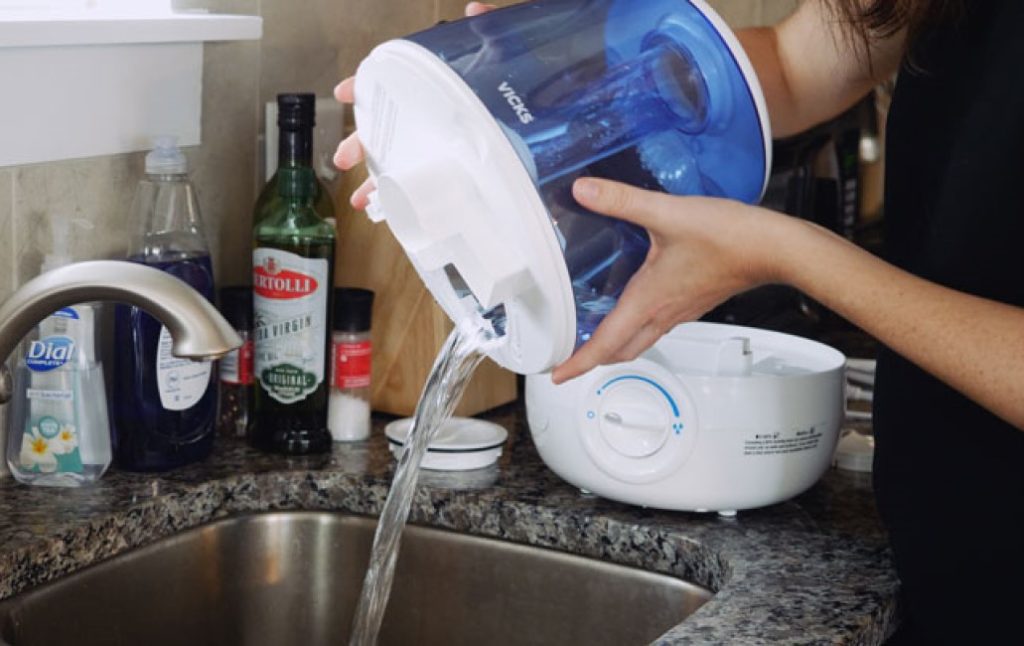

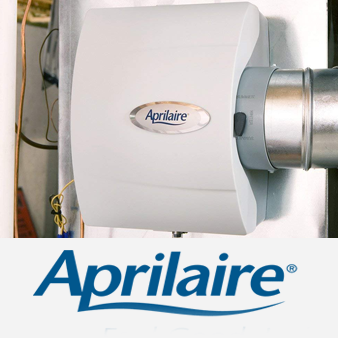
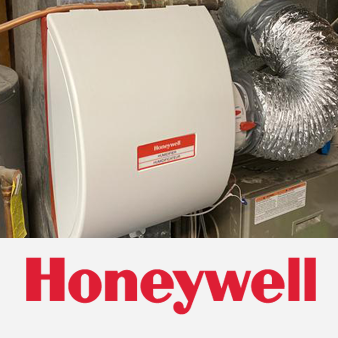
By looking at lists containing the top whole-house humidifiers, you’ll realize that the Aprilaire and Honeywell brands are featured quite often. Of course, this might lead to an impasse where you’re not sure which option to pick. This is because they both have stellar reputations and lots of positive reviews from users.
However, you can often only pick one, making the Aprilaire vs. Honeywell whole-house humidifiers comparison a necessity. Here, we delve into both brands, their most positive and negative attributes, plus what sets them apart from each other. Ultimately this should provide you with the answer you’re looking for.
Aprilaire’s history as a brand is much simpler compared to Honeywell. First off, the Aprilaire brand is a byproduct of the Research Products Corporation which is a company founded in the 1930s. While the company’s initial focus was on products that conditioned water, their demand dried up after World War II.
After that, their attention switched to indoor air quality devices. This led to the release of the first whole-home humidifier in the year 1954. In 1989 the same company came up with the first automatic humidifier control and has continued to improve its designs over the years.
The company is based in Wisconsin and continues to produce whole-home humidifiers to this day. Given their almost century-old experience in the field, it makes sense that they are still one of the top humidifier companies in the market.
While Honeywell is a major competitor to Aprilaire, their history is not as straight and narrow. They have roots in the 1980s as a company with a different name. However, before settling on the Honeywell name, there have been many failures as well as lots of mergers and acquisitions.
These mergers and acquisitions have seen the company’s involvement grow in various areas such as aerospace and defense, home and building controls, and lastly, industrial control. Also, they seem to have been heavily involved in world war II. It is not exactly clear when they started to produce whole-house humidifiers, but at some point, they emerged as serious competition to Aprilaire. Given their extensive resources brought about by the acquisitions and mergers, it is no surprise that their products are top-notch.
It’s not uncommon to see a Honeywell device and an Aprilaire alternative in the same price range. This would mean that they are meant for the same markets. The controls also seem to be pretty similar. Some of the differences tend to come in where weight, controllers, coverage areas, prices, and warranty policies are concerned.
Aprilaire often has a slight edge since their devices tend to have lighter bodies. This is further enhanced by better warranty policies. On the other hand, Honeywell tends to sometimes be better in terms of area coverage, capacity, and affordability.
The Aprilaire lineup has some very popular models, including the Aprilaire 600, which is a budget model, and the 700, which is higher priced. Conversely, the Honeywell brand puts forth the HE280A to compete with the 600 option from Aprilaire and the HE360A against the 700.
We are going to compare these two sets of competing models to see which ones are superior. However, while we may come to an objective conclusion on which one is better, your decision on which model to buy has to be subjective based on your needs.
| Aprilaire 600 | Honeywell HE280A | |
| Humidifier type | furnace humidifier | by-pass humidifier |
| Voltage | n/a | 24V |
| Coverage area | 4,000 sq. ft. | 4,000 sq. ft. |
| Capacity | 17GPD | 20 GPD |
| Control | automatic | automatic |
| Dimensions | 15.37” x 15.75” x 10.25” | 16.25” x 18.5” x 9.75” |
| Weight | 8.7 lbs. | 13 lbs. |
| Warranty | 5-year | 1-year |
| VIEW ON AMAZON | VIEW ON AMAZON |
We’ll start with the Aprilaire 600 and the Honeywell HE280A since they are the most accessible to the masses. The 600 uses a water panel evaporator located on the device to mix dry air with moisture.
Once the water is evenly distributed on the tray, hot air from the HVAC system is brought in. This heats the water, causing it to evaporate and mix with the air. It is this humidified air that is then redistributed to the house.
Remember that this is a whole-house humidification device which means it needs to have a large coverage area. At 4000 sq. ft. it doesn’t disappoint. Since the median size Trusted Source Why Are American Homes So Big? - The Atlantic U.S. houses are among the biggest—if not the biggest—in the world. According to the real-estate firms Zillow and Redfin, the median size of an American single-family home is in the neighborhood of 1,600 or 1,650 square feet. About five years ago, Sonia A. Hirt, a professor of landscape architecture and planning at the University of Georgia, was working on a book about land-use patterns in the U.S., and when she tracked down the average size of dwellings for about two dozen countries, the U.S. came out on top. Her comparisons were rough because she’d cobbled together her data from various sources, but she found that American living spaces had a good 600 to 800 square feet on most of the competition. www.theatlantic.com of a single-family home in the U.S. is between 1600 and 1650 sq. ft. this should work for most people.
If it works for the full 24-hours of the day, the Aprilaire 600 has a capacity of about 17 GPD. However, if the humidity levels in the house are optimal, it may not need to run for that long. It uses a dual-sensor to determine whether it should run or not. One of these sensors checks the outdoor temperature and adjusts the relative humidity required inside the house.
The second sensor checks the humidity levels and whether or not they match the needs of the home. The controller then turns the machine on or off based on the results of the secondary sensor. Installation of this Aprilaire device is fairly simple if you have a few power tools at home and are not afraid of DIY projects.
Also, most of the machine’s components feature reversible positions, so you don’t need to worry about which side to install it on. You can even turn the Aprilaire logo to whichever side you end up installing the machine on.
Nevertheless, if you feel that the installation instructions are overwhelming, you can get professional help. Also, the machine comes with the Aprilaire 5-year warranty, which is quite impressive and attractive to buyers.
The Honeywell HE280A works almost the same way since it requires the blower on the furnace to function for it to work as well. If you turn the furnace off, the machine can’t adjust the humidity in the house.
Installation is simple, and in a way, it is similar to the installation process for the Aprilaire 600. It involves cutting a hole into the supply plenum before attaching the machine. Also, you’ll need to cut another hole in the return plenum for the humidifier controller. The sensor needs to get a reading on the humidity before it can activate or deactivate the device.
Again, some people might be okay with the technical aspects of this installation, while others might not. Contracting a professional gives you a guarantee of better installation results.
The machine covers the same 4000 sq. ft. area as the Aprilaire. However, differences between the Aprilaire and the Honeywell are there as well. One is that the Honeywell only incorporates one sensor while the Aprilaire has two.
Additionally, the Honeywell is larger and heavier than its counterpart. This is what leads to the difference in capacity between the two options. The last major difference is in the warranty. With the Honeywell, you only get one-year coverage which is well below the Five-year standard set by Aprilaire.
As for the pricing, the Honeywell is cheaper, although the difference isn’t that much. Overall, both devices have some solid features and would make reliable purchases.
| Aprilaire 700 | Honeywell HE360A | |
| Humidifier type | fan-powered | flow-through humidifier |
| Voltage | 24V | 120V |
| Coverage area | 4,200 sq. ft. | 4,500 sq. ft. |
| Capacity | 18 GPD | 18 GPD |
| Control | automatic | automatic |
| Dimensions | 15.91” x 18” x 10.34” | 10.25” x 15.25” x 14” |
| Weight | 15.5 lbs. | 18.5 lbs. |
| Warranty | 5-year | 1-year |
| VIEW ON AMAZON | VIEW ON AMAZON |
Next, we have the Aprilaire 700 Whole Home Humidifier vs. the Honeywell HE360A Whole House Humidifier. The Aprilaire 700 is an 18-gallon per day capacity machine. While this is slightly higher than the 17 GPD of the Aprilaire 600, the difference isn’t enough to justify the $70 price difference. Also, the machine uses a water panel evaporator that takes advantage of the dry air from the furnace to work.
Additionally, the coverage area has been bumped up slightly from the 4000 square feet of the lower model to 4200 square feet. Again, this won’t make that big a difference to most buyers unless, of course, you have a bigger home.
Another similarity that you will see between the Aprilaire 700 and the Aprilaire 600 version is how they both have dual sensors. Since the machine tends to respond to both the outdoor temperature and the indoor humidity, you can expect it to maintain a 35% – 45% humidity constant in your home. This is the perfect humidity to ensure you’re breathing easily and that your allergies are not acting up.
As a side benefit, even furniture and installations in the house that are prone to warping when they lack moisture will be safe. During installation, you’re going to need to account for a floor drain. Also, there are both mechanical and electrical components to the installation process. As such, having a professional help you out should be the best course of action. That said, there are detailed videos on YouTube to help you out just in case you decide to handle the job yourself.
The most significant difference between the Aprilaire 700 and the 600 version is the built-in fan. This makes it a flow-through humidifier that pulls air from the furnace before pushing out humidified air. This fan needs power hence the 24V requirements of the machine.
Additionally, you may need to replace the water panel from time to time to maintain the humidifier’s effectiveness. There are multiple Aprilaire Replacement Water Panel options available, but you should only pick the 35. During installation, you might need to set the device to remind you when a panel change is due. This will, however, depend on whether you’re using hard or soft water.
Lastly, you still have the same five-year warranty in the Aprilaire 700 as you do in the 600. The Honeywell HE360A, in comparison, is a flow-through humidifier meaning that it also has an inbuilt fan in its design. This means that the HE360 will pull in air for humidification whether the furnace is on or not. Consequently, this guarantees 24-hour function from the humidifier in all circumstances. Once the air is drawn in, it is pushed to a water panel evaporator that releases humidified air to your home.
The coverage area has been significantly increased compared to the HE280A. After all, the HE280A has 4000 sq. ft. coverage, while this more expensive HE360A installation has a 4500 sq. ft. area coverage. Also, it incorporates relative humidity convertible humidity control that ensures the machine is turned on when the humidity drops below acceptable levels.
Additionally, you may need to buy the Honeywell HC26P1002 humidifier pads, which are meant to be replaced bi-annually in the whole house humidifiers. These pads also fit in a few of the Aprilaire models as well. There are other pads from Honeywell that work with the HE360 as well.
Depending on the vendor, most of the materials needed for installation could be included in the package for the HE360A. That said, it might be safer to pay somebody to do the job for you. That way, you don’t damage your HVAC system or the new device.
Since both the Honeywell HE360A and the Aprilaire 700 incorporate fans in their designs, they tend to need less maintenance than their by-pass counterparts. They’re also more efficient. One significant difference between the Honeywell and Aprilaire model is, again, the warranty. Some people might trust the Aprilaire brand more since it provides more protection for the investment. However, this extra protection does come at a cost since the Aprilaire costs about $40 more than the competition.
As you can see, there’s not a lot that separates these two brands in how they function and how they are installed. There is, however, a slight difference in size and weight, which might not be enough to help make an objective decision on the two. That said, some of the Honeywell models may cover more area than their Aprilaire counterparts.
Another difference is in the sensors used. Aprilaire has a superior dual sensor that incorporates even the temperature outside the house to ensure the humidity stays at the optimum levels. This might offer additional protection for the installations and the people who would otherwise be breathing in dry air.
Also, the Aprilaire brand, with its five-year warranty, has significantly better terms than the coverage offered by Honeywell. Lastly, there is the matter of cost. Aprilaire’s machines, on average, are more expensive than their counterparts, although the differences may vary.
Ultimately, if it is a question of the Aprilaire vs. Honeywell whole-house humidifiers, we would pick Aprilaire. Nevertheless, the differences are so small that it might not matter much to many of you. Additionally, for the budget-conscious, choosing the Honeywell models becomes a no-brainer.
